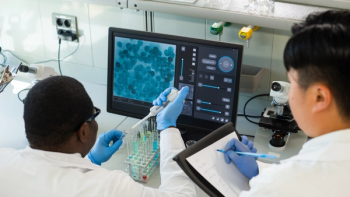
Weeding Out Data Inconsistencies in CDL: Q&A With Roxy McCloskey, Thought Leader at SCIEX
McCloskey discusses the steps that drug developers can take to ensure better CLD outcomes in 2024.
Roxy McCloskey recently spoke with Pharmaceutical Executive about the latest trends and developments in cell line development (CLD). As a thought leader at SCIEX, McCloskey believes that there are steps drug developers can take in the coming year to ensure stability for new complex therapeutics.
Pharmaceutical Executive: What trends do you see for CLD in 2024?
Roxy McCloskey: There are several trends:
- Having more information up front and being able to get key information on charge heterogeneity, stability, PTMs, and even earlier in the pipeline.
- Utilizing platform technologies that enable more informed decisions and push forward the most promising cell lines to production.
- Using intuitive software solutions.
- Integrating multiple platforms and analytical approaches to gain the most information.
PE: How can drug developers ensure that they catch and weed out data inconsistencies early?
McCloskey: Set a target to gain as much information on a molecule as possible in the least amount of time with minimal sample preparation. This information can be used to better predict what will happen when this drug goes into production. Gather information on stability and how cell culture conditions play a role in that stability. Identify what new product quality attributes could come up and develop a strategy on how to address or understand the cause of those surprises.
Monitoring charge heterogeneity during cell line development has long been a common practice. Newer platform technologies, such as icIEF-UV/MS that integrate key analytical functions and provide mass information on charge variants, are providing a path to gaining critical information on PTMs. Being able to define what happens to a molecule when certain parameters are changed is crucial information. Being able to get that information in a couple of hours is game-changing.
PE: Will therapeutics continue to get more complicated?
McCloskey: The short answer is probably.
Over the years drug pipelines have evolved from simple monoclonal antibodies to bi-specifics to tri- specifics and beyond. The goal with these new modalities is to be better able to treat disease.
Being able to tailor biotherapeutics to a particular disease, minimize side effects and improve effectiveness are the ultimate goals.
Take a look at the recent resurgence of antibody drug conjugates (ADCs), drugs designed to deliver medicine to particular cells to treat a particular problem. We have seen a rush of announcements around the acquisitions of ADC companies and significant investments by large biopharma companies to further the development of these drugs and develop technologies or chemistries to improve their stability. And these ADCs are highly complex.
The more complex the molecule, the more challenging the analysis. Simple mAbs have their own issues and exhibit numerous common modifications. Genetic variations and PTMs result in a diversity of molecular forms, and fusion proteins compound these inherent issues. Throw in a small molecule payload—as in the case of an ADC—and you have a molecule with a lot of personality to understand.
PE: Are there other methods besides CE and MS to ensure consistent data?
McCloskey: A goal in developing biotherapeutics is to gain as much knowledge as possible on the molecule. This molecular knowledge can be used to make more informed decisions on how to progress—what clones to push forward, what molecules to push forward, or what analytical approach to take next.
Gaining this knowledge requires the use of multiple technology types and platforms or an orthogonal approach. To name a few, CE, MS, LC/MS and integrated icIEF-UV/MS platforms all play a role in providing this information. Instrument and column manufacturers continue to push the boundaries of analytical science through innovative technologies and partnerships with scientists seeking to gain more molecular knowledge, streamline processes and ultimately make an impact in the treatment of disease.
A robust and consistent method is crucial. Automating more routine parts of the characterization pipeline, such as sample preparation, can improve data consistency and, more importantly, leave room for innovation and data analysis.
Mass spectrometry provides so much information. However, analyzing this data could become very tedious and require a specialized lens. Software platforms that provide an intuitive and visual means of accessing critical data are extremely important. Being able to visually flag an impurity or an anomaly allows more scientists to participate in this part of the analytical process. This puts decision making information into the hands of those who, while not experts in mass spectrometry data analysis, are heavily involved in cell line production and therapeutic manufacturing.
Newsletter
Lead with insight with the Pharmaceutical Executive newsletter, featuring strategic analysis, leadership trends, and market intelligence for biopharma decision-makers.




